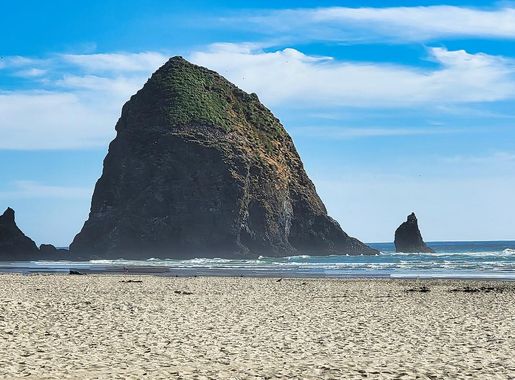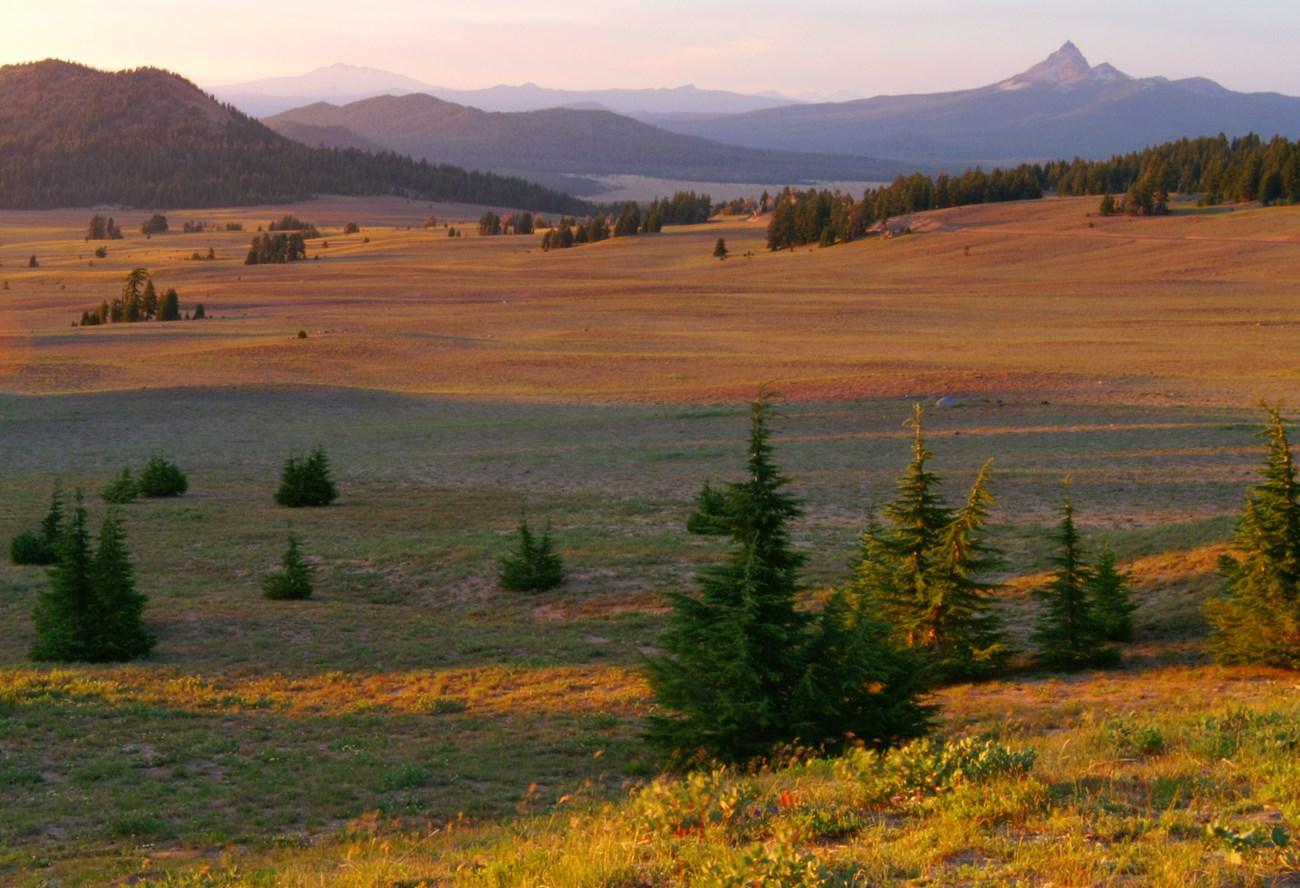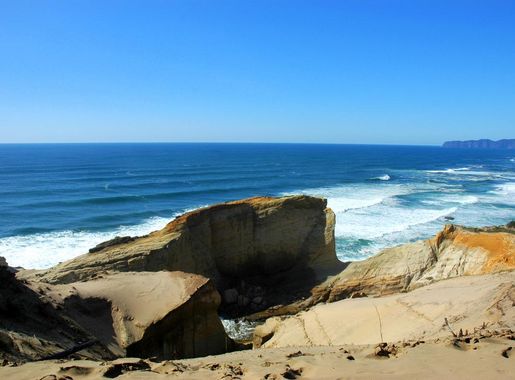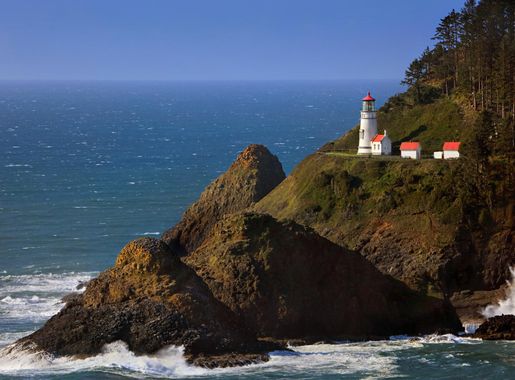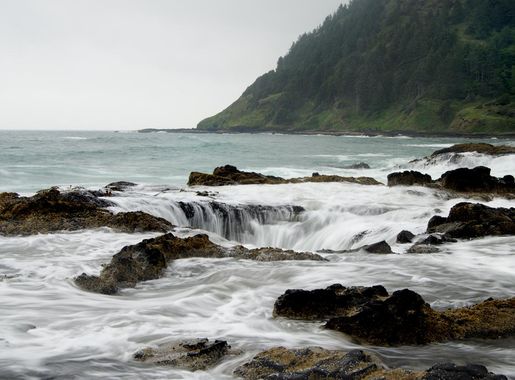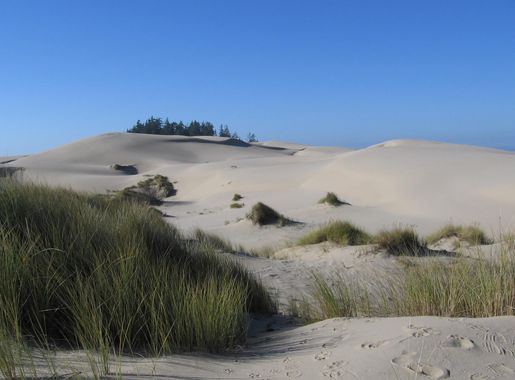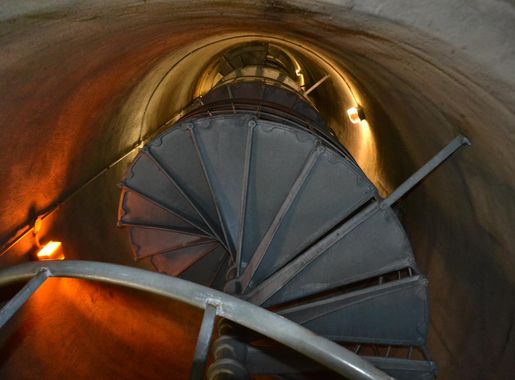
Exploring the Untamed Beauty of the Oregon Coast
Discover the stunning natural beauty, charming coastal towns, and diverse outdoor adventures along the picturesque Oregon Coast.
The Oregon Coast is a breathtaking stretch of coastline that spans over 360 miles along the Pacific Ocean. Known for its rugged cliffs, sandy beaches, and charming coastal towns, this destination offers a diverse range of experiences for every type of traveler. From the iconic Haystack Rock in Cannon Beach to the serene shores of Gold Beach, each stop along the Oregon Coast promises stunning natural beauty and unique attractions. Outdoor enthusiasts will find plenty to do here, from hiking through ancient forests in Oswald West State Park to whale watching in Depoe Bay. The Oregon Coast is also home to several historic lighthouses, such as Heceta Head Lighthouse, which offers panoramic views and fascinating history. Don't miss the chance to explore the tide pools teeming with marine life at places like Cape Perpetua and Yaquina Head. For those who enjoy a more relaxed pace, the coastal towns are perfect for leisurely strolls, shopping, and dining on fresh seafood. Towns like Newport and Astoria offer a charming blend of old-world charm and modern amenities, with plenty of local shops, galleries, and eateries to explore. Whether you're looking for adventure or relaxation, the Oregon Coast is a destination that promises unforgettable memories.
Local tips in Oregon Coast
- Check the tide schedules before visiting tide pools to ensure the best experience and safety.
- Pack layers, as the weather can be unpredictable and change quickly along the coast.
- Visit during the shoulder seasons (spring and fall) to avoid the summer crowds and still enjoy pleasant weather.
- Don't miss trying the local seafood; Dungeness crab and clam chowder are must-tries.
- Consider staying in a local bed and breakfast for a more personalized and charming experience.
Exploring the Untamed Beauty of the Oregon Coast
The Oregon Coast is a breathtaking stretch of coastline that spans over 360 miles along the Pacific Ocean. Known for its rugged cliffs, sandy beaches, and charming coastal towns, this destination offers a diverse range of experiences for every type of traveler. From the iconic Haystack Rock in Cannon Beach to the serene shores of Gold Beach, each stop along the Oregon Coast promises stunning natural beauty and unique attractions. Outdoor enthusiasts will find plenty to do here, from hiking through ancient forests in Oswald West State Park to whale watching in Depoe Bay. The Oregon Coast is also home to several historic lighthouses, such as Heceta Head Lighthouse, which offers panoramic views and fascinating history. Don't miss the chance to explore the tide pools teeming with marine life at places like Cape Perpetua and Yaquina Head. For those who enjoy a more relaxed pace, the coastal towns are perfect for leisurely strolls, shopping, and dining on fresh seafood. Towns like Newport and Astoria offer a charming blend of old-world charm and modern amenities, with plenty of local shops, galleries, and eateries to explore. Whether you're looking for adventure or relaxation, the Oregon Coast is a destination that promises unforgettable memories.
When is the best time to go to Oregon Coast?
Iconic landmarks you can’t miss
Crater Lake National Park
Explore the breathtaking beauty of Crater Lake National Park in Oregon, home to the deepest lake in the United States surrounded by stunning landscapes.

Columbia River Gorge National Scenic Area
Discover the breathtaking beauty of Columbia River Gorge National Scenic Area, a paradise for nature lovers and adventure seekers in Oregon.

Unmissable attractions to see
Lava River Cave
Uncover the underground secrets of Lava River Cave, a geological marvel in Bend, Oregon, promising an unforgettable adventure for nature lovers.
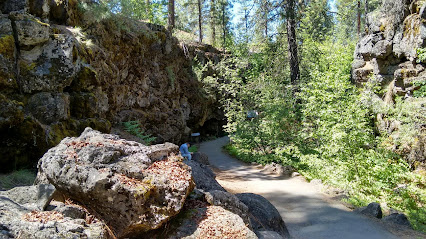
Tumalo State Park
Explore Tumalo State Park: A Nature Lover's Paradise in Oregon with Hiking, Fishing, and Scenic Trails.
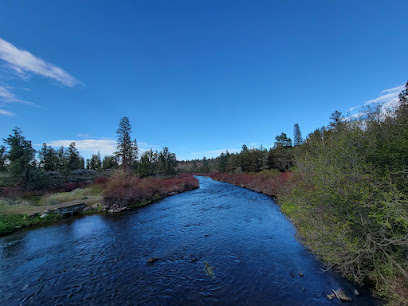
Thomas Condon Visitor Center
Explore Oregon's geological treasures at the Thomas Condon Visitor Center, a historical museum showcasing the wonders of the John Day Fossil Beds.
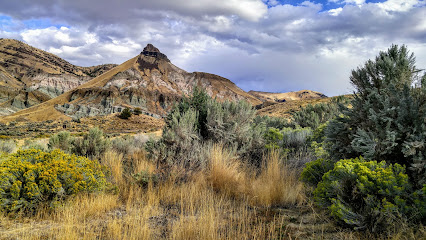
Summer Lake Wildlife Area
Explore the breathtaking Summer Lake Wildlife Area, a tranquil wildlife refuge in Oregon, ideal for birdwatching and nature photography.
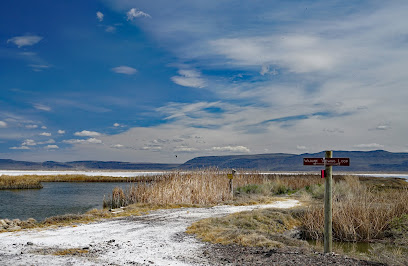
Local Phrases about Oregon Coast
-
- HelloHowdy
[haʊ-di] - GoodbyeSee ya
[siː jə] - YesYep
[yɛp] - NoNah
[nɑ] - Please/You're welcomePlease/You're welcome
[pliːz/jʊr ˈwɛlkəm] - Thank youThanks
[θæŋks] - Excuse me/SorryExcuse me/Sorry
[ɪkˈskjuz mi/ˈsɔri] - How are you?How's it going?
[haʊz ɪt ˈɡoʊɪn] - Fine. And you?Good. You?
[ɡʊd ju] - Do you speak English?Ya speak English?
[jə spiːk ˈɪŋɡlɪʃ] - I don't understandI don't get it
[aɪ doʊnt ˈʌndərˌstænd]
- HelloHowdy
-
- I'd like to see the menu, pleaseCan I check the menu out?
[kæn aɪ ʧɛk ðə ˈmɛnjuː aʊt] - I don't eat meatI don't do meat
[aɪ doʊnt du mit] - Cheers!Cheers!
[ʧɪrz] - I would like to pay, pleaseI'll settle up
[aɪl ˈsɛtəl ʌp]
- I'd like to see the menu, pleaseCan I check the menu out?
-
- Help!SOS!
[ɛsˌoʊˈɛs] - Go away!Beat it!
[bit ɪt] - Call the Police!Ring the cops!
[rɪŋ ðə kɑps] - Call a doctor!Get a doc!
[ɡɛt ə dɑk] - I'm lostI'm turned around
[aɪm tɜrnd əˈraʊnd] - I'm illI'm under the weather
[aɪm ˈʌndər ðə ˈwɛðər]
- Help!SOS!
-
- I'd like to buy...I'm in for...
[aɪm ɪn fɔr] - I'm just lookingJust browsing
[ʤʌst ˈbraʊzɪŋ] - How much is it?What's the damage?
[wʌts ðə ˈdæmɪdʒ] - That's too expensiveThat's spendy
[ðæts ˈspɛndi] - Can you lower the price?Can you drop the tag?
[kæn jʊ drɑp ðə tæɡ]
- I'd like to buy...I'm in for...
-
- What time is it?What's the hour?
[wʌts ðə aʊər] - It's one o'clockIt's one
[ɪts wʌn] - Half past (10)Halfway to (10)
[hæfˈweɪ tu] - MorningMornin'
[ˈmɔrnɪn] - AfternoonAfternoon
[ˌæftərˈnun] - EveningEvenin'
[ˈivnɪn] - YesterdayYesterday
[ˈjɛstərˌdeɪ] - TodayToday
[təˈdeɪ] - TomorrowTomorrow
[təˈmɑroʊ] - 1One
[wʌn] - 2Two
[tu] - 3Three
[θri] - 4Four
[fɔr] - 5Five
[faɪv] - 6Six
[sɪks] - 7Seven
[ˈsɛvən] - 8Eight
[eɪt] - 9Nine
[naɪn] - 10Ten
[tɛn]
- What time is it?What's the hour?
-
- Where's a/the...?Where's the...
[wɛrz ðə] - What's the address?What's the addy?
[wʌts ðə ˈædi] - Can you show me (on the map)?Can you point it out (on the map)?
[kæn jʊ pɔɪnt ɪt aʊt ɒn ðə mæp] - When's the next (bus)?When's the next ride?
[wɛnz ðə nɛkst raɪd] - A ticket (to ....)A pass (to ....)
[ə pæs tu]
- Where's a/the...?Where's the...
History of Oregon Coast
-
Long before European explorers arrived, the Oregon Coast was home to numerous indigenous tribes such as the Coos, Coquille, Siuslaw, and Chinook. These tribes lived off the rich marine resources, including fish, shellfish, and marine mammals, and developed sophisticated cultures and societies that thrived in the coastal environment.
-
In the late 18th century, European explorers began to chart the Pacific Northwest. Notably, Captain Robert Gray, an American explorer, crossed the Columbia River Bar in 1792, naming the river after his ship, the Columbia Rediviva. This marked the beginning of increased maritime exploration and trade in the region.
-
The famous Lewis and Clark Expedition, commissioned by President Thomas Jefferson, reached the Oregon Coast in 1805. After months of arduous travel, the expedition set up their winter camp at Fort Clatsop near present-day Astoria. Their detailed journals provide invaluable insights into the natural environment and native cultures of the region.
-
During the early 19th century, the fur trade became a significant economic activity along the Oregon Coast. The Hudson's Bay Company and the American Fur Company established trading posts, and trappers and traders exchanged goods with indigenous tribes. Fort Astoria, established by John Jacob Astor's Pacific Fur Company in 1811, became a key outpost in this era.
-
The mid-19th century saw an influx of settlers traveling westward along the Oregon Trail, many of whom eventually reached the Oregon Coast. Towns such as Astoria, Newport, and Coos Bay began to develop as settlers established homes, farms, and businesses. The Donation Land Claim Act of 1850 encouraged further settlement by offering land to pioneers.
-
To aid maritime navigation, a series of iconic lighthouses were constructed along the Oregon Coast in the late 19th and early 20th centuries. Notable examples include the Heceta Head Lighthouse, Yaquina Bay Lighthouse, and Cape Meares Lighthouse. These structures not only guided ships safely but also became historical landmarks.
-
The treacherous waters of the Oregon Coast have claimed numerous ships over the centuries. Infamous shipwrecks such as the Peter Iredale, which ran aground near Fort Stevens in 1906, and the New Carissa, which wrecked near Coos Bay in 1999, are stark reminders of the perils faced by mariners navigating these waters.
-
The Oregon Coast is rich in cultural heritage and hosts numerous festivals celebrating its history and traditions. Events like the Astoria Regatta, the Newport Seafood & Wine Festival, and the Coos Bay Blackberry Arts Festival showcase the region's maritime heritage, local cuisine, and artisan crafts, drawing visitors from near and far.
-
In recent decades, there has been a growing emphasis on preserving the natural beauty and ecological integrity of the Oregon Coast. Efforts such as the establishment of the Oregon Islands National Wildlife Refuge and the Oregon Coast Trail reflect the commitment to protecting wildlife habitats, scenic landscapes, and recreational opportunities for future generations.
Oregon Coast Essentials
-
The Oregon Coast is accessible via several major highways including US Route 101, which runs north-south along the entire coast. The nearest major airports are Portland International Airport (PDX) and Eugene Airport (EUG). From these airports, you can rent a car or take a shuttle service to reach the coast. Amtrak also offers train services to nearby stations such as Salem and Eugene, where you can continue your journey by car or bus.
-
The best way to explore the Oregon Coast is by car, as it gives you the flexibility to stop at various scenic spots and small towns. Rental cars are available at major airports and cities. Public transportation options are limited but include local bus services operated by Tillamook County Transportation District and Lincoln County Transit. Bicycling is another popular way to explore the coast, especially in the summer months.
-
The official currency is the US Dollar (USD). Credit and debit cards are widely accepted in most businesses, including restaurants, hotels, and shops. ATMs are readily available in larger towns, but it's advisable to carry some cash, especially if you plan to visit smaller, more remote areas where card acceptance might be limited.
-
The Oregon Coast is generally safe for tourists. However, it is always wise to take standard precautions such as not leaving valuables in your car, being aware of your surroundings, and avoiding isolated areas at night. Some areas in larger towns like Newport and Coos Bay have higher crime rates, so staying in well-lit and populated areas is advisable. Always check weather conditions before venturing out, as the coast can experience sudden changes in weather.
-
In case of an emergency, dial 911 for immediate assistance. Medical facilities are available in larger towns such as Newport and Astoria. It is recommended to have travel insurance that covers medical emergencies. For minor health issues, pharmacies are available in most towns. Always inform someone of your travel plans, especially if you are hiking or exploring remote areas.
-
Fashion: Do wear layers and bring a waterproof jacket, as the weather can be unpredictable. Avoid wearing high heels if you plan to explore outdoor areas. Religion: Do respect local customs and traditions. There are various religious communities, so being respectful of different practices is important. Public Transport: Do be courteous to drivers and other passengers. Give up your seat to elderly passengers. Greetings: Do greet people with a smile and a friendly 'hello.' Eating & Drinking: Do try local seafood and other regional delicacies. Don’t litter; always dispose of your trash properly.
-
To experience the Oregon Coast like a local, visit the farmers' markets where you can buy fresh produce and handmade goods. Try to engage with locals at community events or small town festivals. Don't miss the opportunity to explore the tide pools at low tide or take a hike on one of the numerous coastal trails. For a unique experience, visit the smaller, lesser-known beaches and state parks for more solitude and natural beauty.
Nearby Cities to Oregon Coast
-
Things To Do in Bend
-
Things To Do in Klamath Falls
-
Things To Do in The Dalles
-
Things To Do in Hood River
-
Things To Do in Pendleton
-
Things To Do in Kennewick
-
Things To Do in Richland
-
Things To Do in Yakima
-
Things To Do in Nampa
-
Things To Do in Boise
-
Things To Do in McCall
-
Things To Do in Redding
-
Things To Do in Mountain Home
-
Things To Do in Tacoma
-
Things To Do in Auburn

